Spinning Records
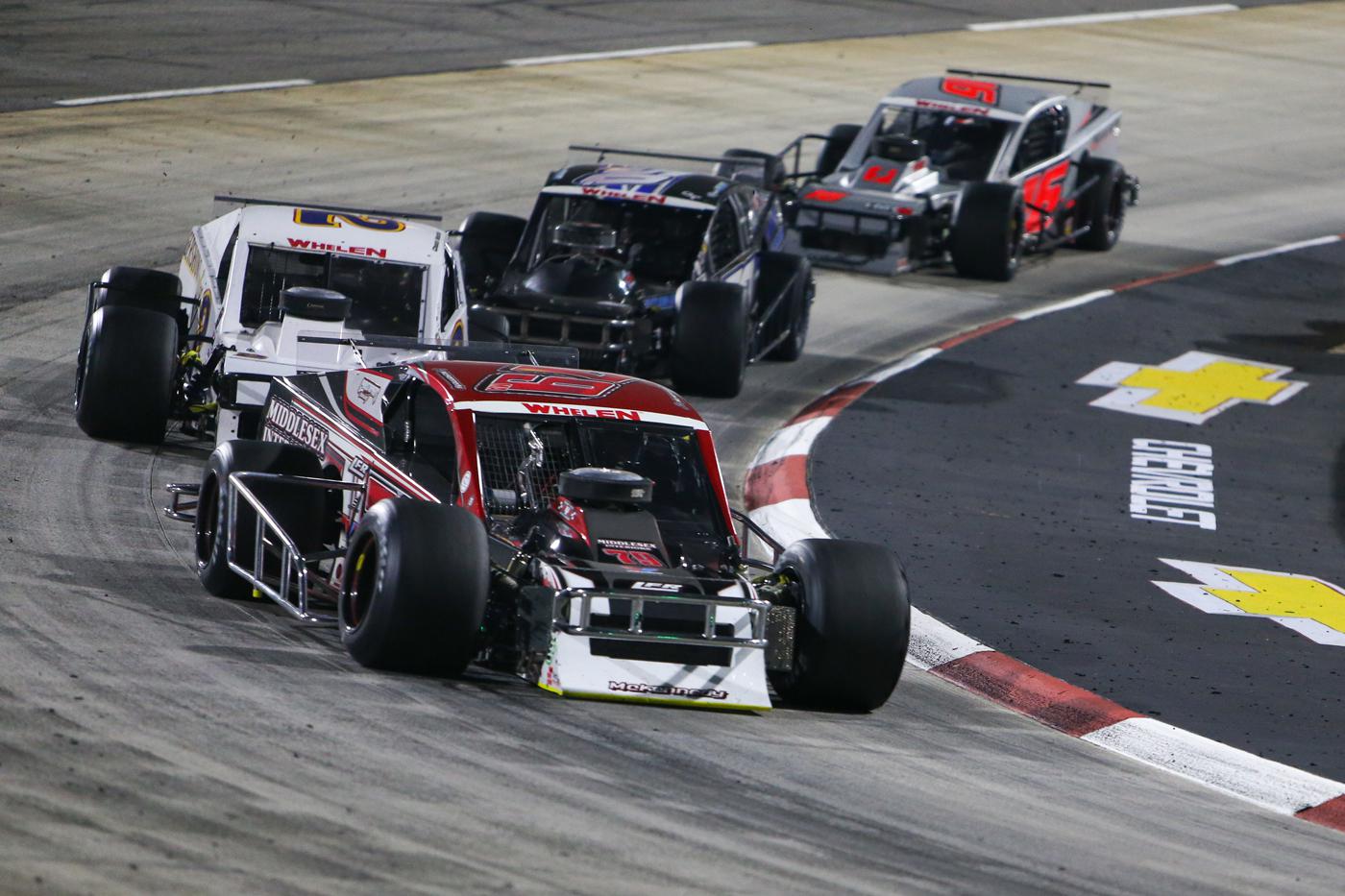
In contrast to the Cup series, the rule set of NASCAR’s Whelen Modified Tour provides a substantial amount of freedom within the cars’ chassis design, and that allows builders to bring more innovation and customization to the field. But as our experts point out, that flexibility can prove to be a double-edged sword for those who’re just getting up to speed.
NASCAR’s modified racing history is as storied as the organization that created it. It was established in 1948 and is now the sanction’s oldest division, with the first NASCAR points-paying race on the beach course in Daytona Beach, Florida. The division has evolved in a variety of different ways in the time since, but its role as a home for technical innovation has remained a hallmark. While recent years have seen organizers tighten the reins in the interest of improving safety and containing costs, Whelen modifieds continue to offer builders and teams a degree of creative freedom that the Cup series cannot.
“We have some guidelines to adhere to with respect to how we build our cars, but the division also allows us to bring some of our own ideas to the table,” said Phil Stefanelli of PSR Products, Midland, North Carolina. “For example, we’ve recently designed something that’s a little different as compared to most of what’s been out there for the past few years, something with a lot more adjustability. The removal of the chassis height rule last year has allowed us to do more with that; we’re playing with a lot of different suspension stuff now that we couldn’t do before.”
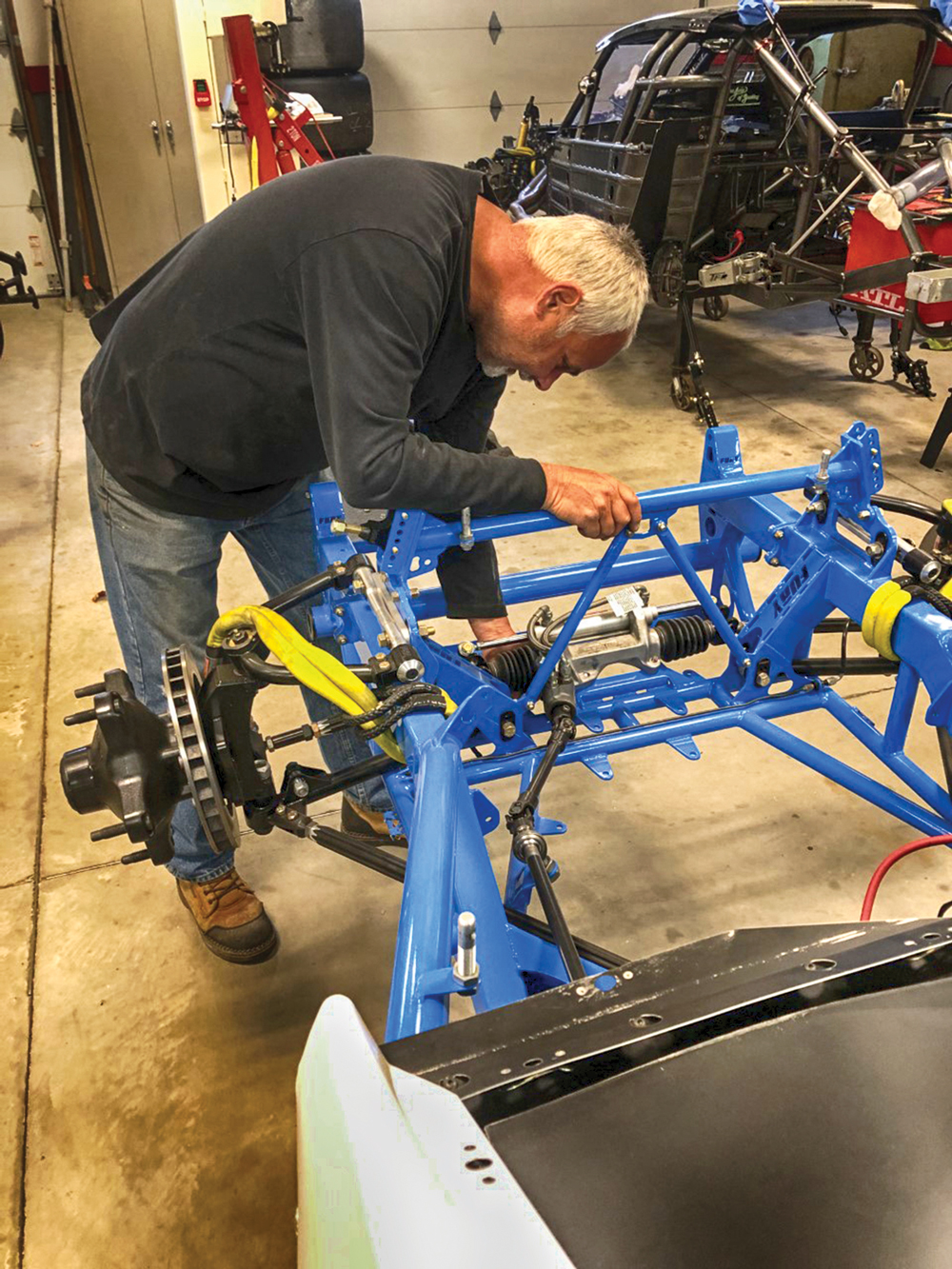
With the majority of the cars’ powertrain components consisting of spec parts, chassis design and setup has become a focal point for teams that are looking for a competitive edge. Darius Grala of Mooresville, North Carolina’s Fury Race Cars explained, “There’s substantially more opportunity for vendors in the Whelen Modified Tour because there are way fewer limitations than you have in a single-supplier model like the Cup series. That allows builders and teams to be more creative, but that flexibility can also add a new level of complexity for teams. That complexity provides more opportunity to get it wrong.”
The most effective chassis designs in modified racing tend to be informed by data as well as extensive real-world experience. When it comes to doing things the “right way?” Well, the answer really depends on who you ask.
Room To Move
The ruleset for Whelen modifieds offers teams and builders the opportunity to try new things with elements of the chassis design, but it’s not a total free-for-all. “You have a ‘box’ that you have to work within,” said Bill Cole of B&R Fabrication, Howell, New Jersey. “There are rules for chassis width, height, track width, wheelbase, and other dimensional elements.”
Other aspects of this ‘box’ focus on the safety side of the car. “There are minimums for tubing diameters, material thicknesses, and the rules for spindle design were updated as well,” Grala said. “After a competitor’s spindle broke, organizers started scrutinizing their designs more, testing them for strength, and an additional tether was added on the right side. The designs needed to be changed in order to accommodate that.”
The situation changes significantly when it comes to the suspension systems, though. “There’s a pretty decent-sized window to make changes to A-frame length and angle,” Cole said. “Suspension pickup points can be changed, trailing arm angles are pretty open, and we have a lot of leeway on sway bar size and arm length. You can also make changes to the way the sway bars link up to the lowers, too. The kingpin inclination on the spindles is pretty open as well, along with wheel offset, provided that you stay within the track width limits. Shocks are a big one, too—you run pretty much any shock that you want to. And you’re trying to build the car as light as possible, and with a center of gravity that’s as low as possible, within the limits of the rulebook.”
Unlike the Cup series, this approach gives each Whelen modified chassis manufacturer the opportunity to bring their own perspective to the design of major components in the car’s front and rear suspension systems. It also gives teams the ability to influence the design of the car based on their own knowledge and experience, and that can help to tailor the car more precisely to the preferences of their respective crew chiefs and drivers.
Distinct Strategies
Stefanelli told us that manufacturers like PSR Products have taken full advantage of this relatively open aspect of the modified chassis by developing ground-up, specialized designs.
“Our front and rear suspensions are different from anyone else’s,” he explained. “We’re racers ourselves, and four or five years ago we saw that there was an opening in the modified series, so we sat down and looked at what was out there, and what we could do better. We wanted our cars to be more racer-friendly, so we designed a whole new chassis. We’ve been very successful with it—Tommy Baldwin won three modified championships with our stuff last year. I don’t want to reveal too much about what we do differently, because that’s our advantage here, but I will say that we did extensive research on front-end suspension geometry and sway bar geometry, and at the rear of the car we have a totally different philosophy to the suspension design.” He cited other companies that use torque arm systems in the rear, “but we decided to focus on a top link design for our cars. We found through our testing that the top link design gives you more forward bite in the car than a torque arm does.”
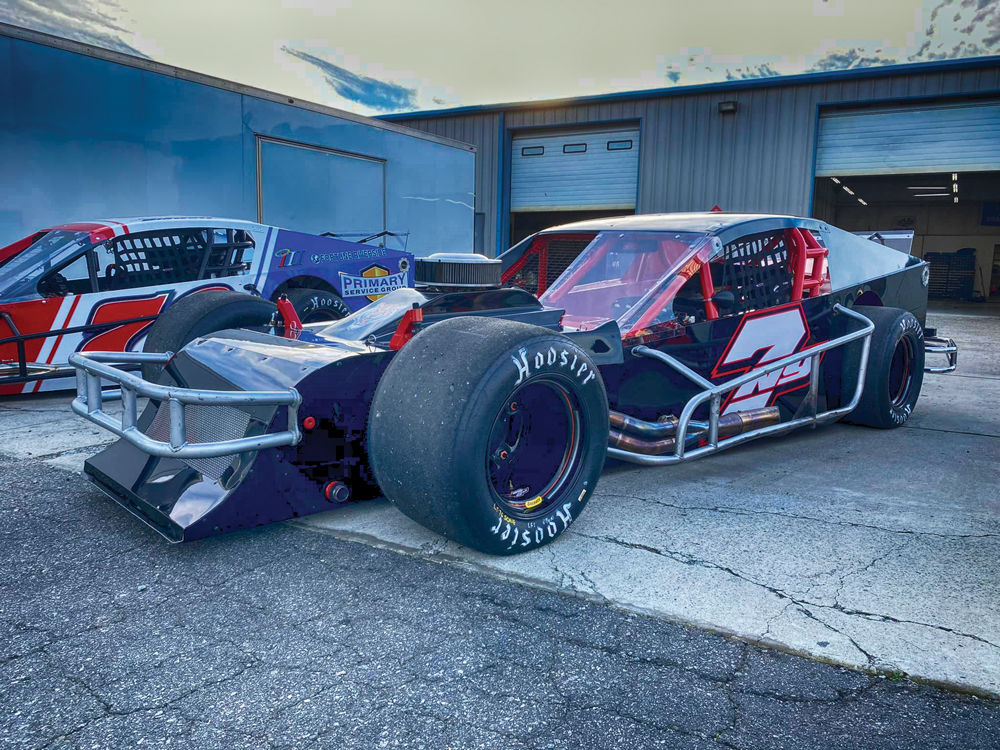
Grala explained that, since the modified division doesn’t put limitations on testing, builders and teams have benefited from knowledge and experience that can be harder to come by through simulation and other means. “Sway bar locations and sizes, along with the sway bar arm designs, are a huge part of the front end of the car. Cup teams used to mess with this stuff continuously before they became spec parts.” Since builders in the modified division can also build in adjustability for the suspension pickup points, there’s a wealth of different tactics available to teams when it comes to car setup.
“The pickup points change everything,” Grala continued, “and the ride height rule is a good example of why you might want to make adjustments there, or even just because of the differences in tire compounds from year to year. Changing this could even provide an advantage just when moving from track to track. The optimum position for one track design might not be the same for another. Cup cars have some leeway here, too; they just have a specific number of holes that they can bolt the components to. But for modifieds it’s essentially open. On our car we use these oval inserts called slugs, which are put into oval cutouts on the chassis. Those inserts have holes in varying locations, but those can be changed. For example, if we have three holes on a slug and someone said to us, ‘I need a hole right in between where these are,’ we can simply make a slug where the hole is located exactly where they want it to be.”
Cole noted that there are a number of adjustments that can improve the car’s grip and yield faster lap times in turn, but the factors involved tend to make these settings a moving target.
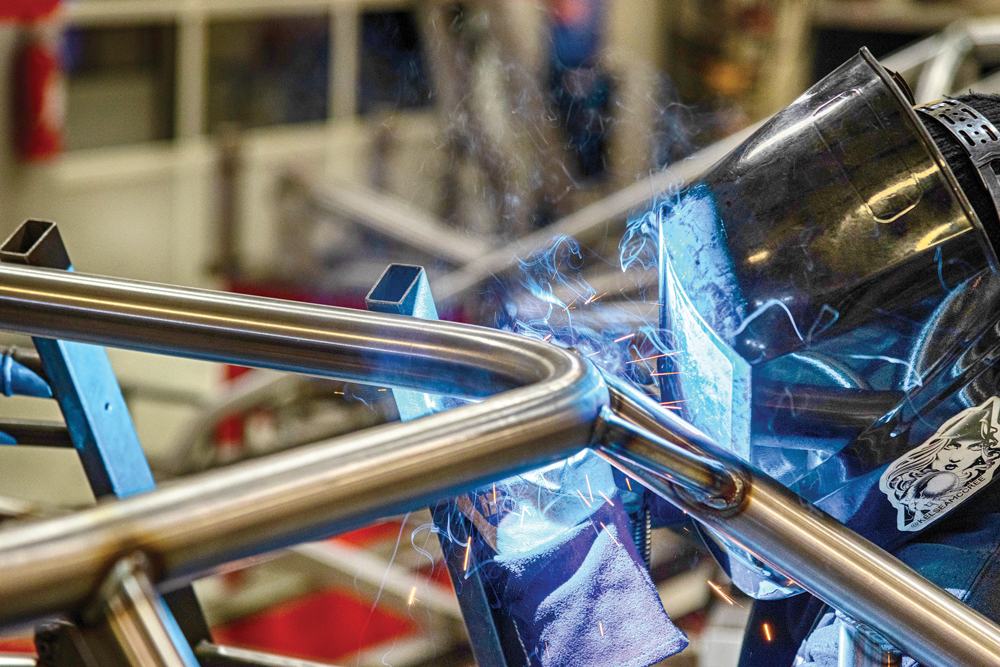
“Different manufacturers put different kingpin inclinations in the spindles that can affect the amount of negative camber in the wheel, and it changes the cross-weight in the car a little bit,” Cole explained. “You have four tires that you have to connect to the race track, and you’re doing whatever you can to make sure as much of each tire’s surface is doing that as is possible. But, as you go into a corner, the left-front loses camber while the right-front gains it, so that’s always a big struggle. Some guys will run way more A-frame length on the left-front to try to keep that camber in it. Each track wants something different, and some tires want more camber gain than others, so the sweet spot is always changing.”
The situation at the rearend of the car is even more open to interpretation. “Torque arm rear suspension designs have been around for a while now, but other racers swear by top link setups,” he added. “A lot of drivers also like running a short track bar on the left side, others want a really long track bar in the car that goes from one side to the other. Sometimes it just comes down to personal preference, and what they’re used to working with. There’s a million ways to build a mouse trap, and some will go just as fast as others. There are crew chiefs out there who can make anything go around a race track. Something new comes out every year, but some of these trick setups are really just a selling point. Every once in a while, someone will find something that really works, but people usually end up going back to the stuff that they know well.”
Putting It To The Pavement
The ability for chassis builders to take varying approaches to suspension design can benefit racers in a variety of ways, but customization and adjustability won’t translate to tangible improvements in performance without an effective chassis setup. While many racers still rely on knowledge gained from years of notes and seat time, an increasing number of teams are bringing data acquisition systems and other technologies into their test sessions to help pinpoint what works and what doesn’t.
“Data logging allows you to see what the driver is doing and how the suspension is working throughout its travel,” said Grala. “From time to time, we’ll even mount cameras on the car to monitor what the suspension is doing visually. That can allow us to see what’s flexing and what isn’t and ensure that the suspension is actually behaving the way it’s supposed to.”
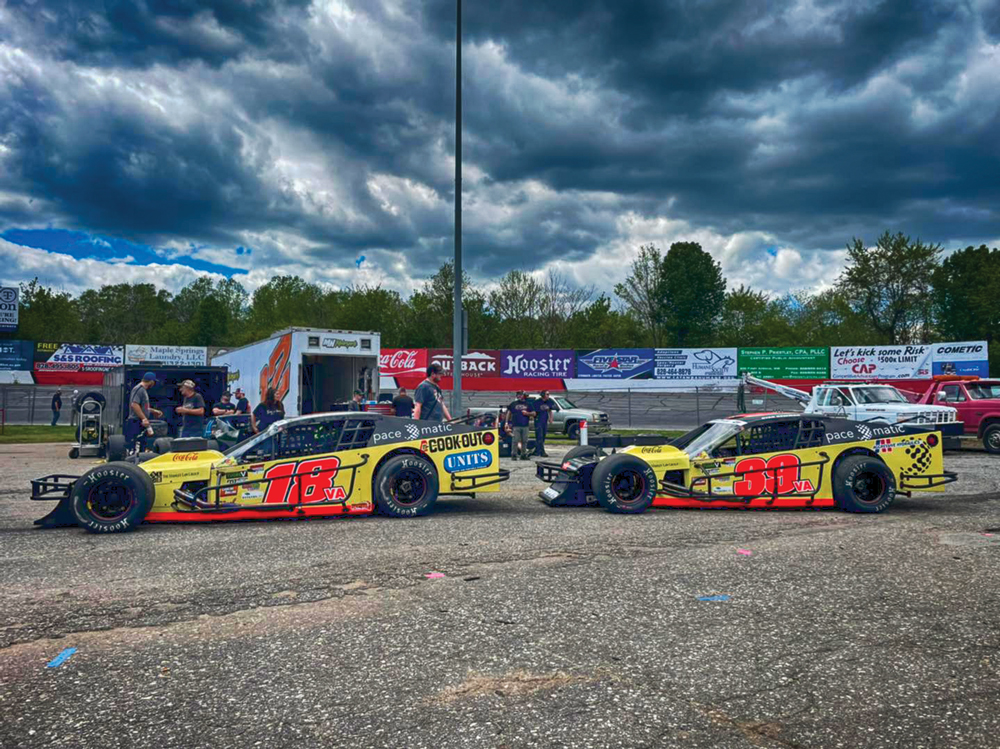
Data can help inform teams and builders about the car’s behavior on a more fundamental level as well. “We’ll put a data system on our car and head to a track that we’re going to race at to do some testing, and then we’ll come back to the shop with that data,” said Stefanelli. “We have a full pull-down system here, and that allows us to simulate a car going around basically any track that we have data from. From that we can get an understanding of where our roll center needs to be, and all of our components are built around where we want that roll center in the car. It can also help us determine things like sway bar timing, and we can see all of the loads on the tires to get a better sense of what’s going on. It helps identify any potential binds in the suspension, too. More often than not, when someone is having a problem with their car and they don’t know what’s going on, they have a bind in the suspension somewhere. This is really where we’re concentrating our efforts in modifieds these days. Since things are pretty locked down in terms of powertrain and the tires, the setup has become the focus.”
But there is, of course, still something to be said for talent and experience as well. “A perfect example is Matt Hirschman,” said Cole. “His car doesn’t have the cutting-edge technology that some of these newer teams use, and yet he just dominates wherever he goes. They’re basically working off of an old notebook—they’ve been to every track more than once and know what to expect from each one of them. If you’re a young traveling team and you show up somewhere without even knowing what the track looks like, it’s going to hurt you.”
SOURCES
B&R Fabrication
facebook.com/BRFabrications/
Fury Race Cars
furyracecars.com
PSR Products
psrproducts.net
 MEMBERSHIP LOGIN
MEMBERSHIP LOGIN JOIN PRI
JOIN PRI


